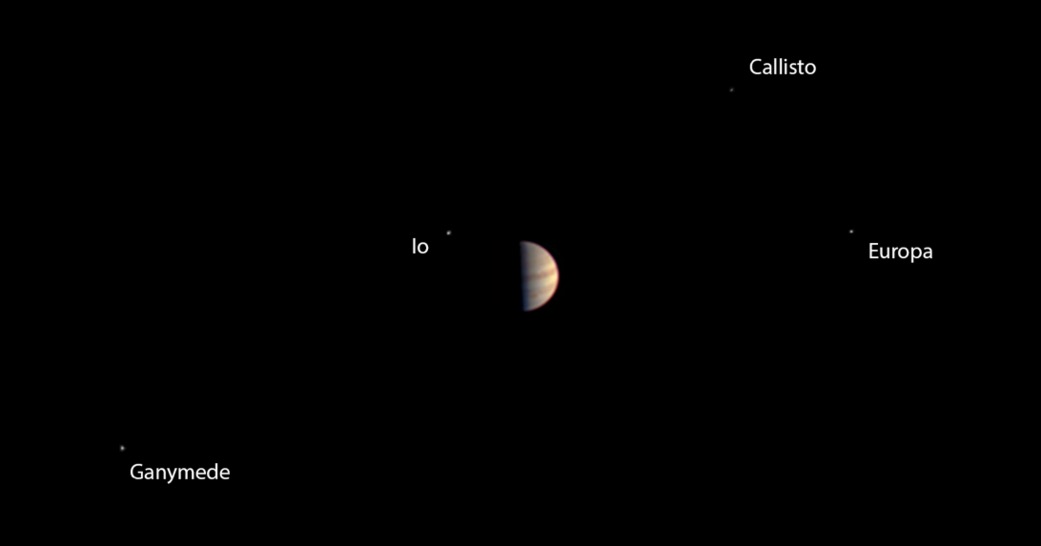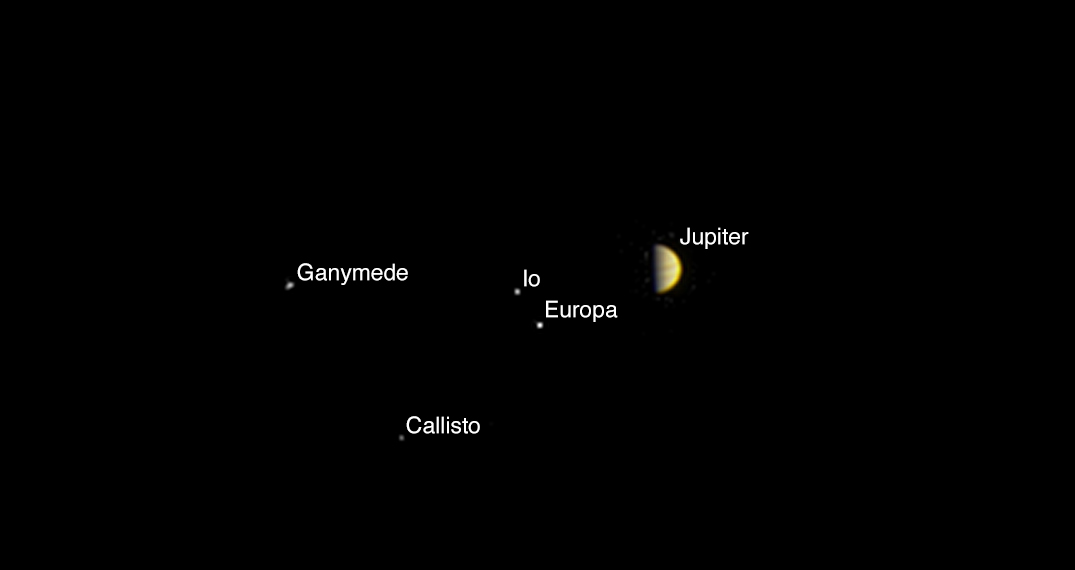One Last View of Jupiter: Juno Snaps Photo Ahead of Tonight's Orbit Insertion

On June 29, NASA's Juno probe snapped one last picture of the Jupiter system before switching off its instruments in preparation for today's (July 4) daring dive through the planet's hellish radiation field.
The image was taken at a distance of 3.3 million miles (5.3 million kilometers) from Jupiter, but eventually Juno will send back images taken at much shorter distances — the probe is expected to fly to within 3,100 miles (5,000 km) of Jupiter's cloud tops, a closer orbit than any other probe before it.
But before Juno can make history, it has to get into orbit around Jupiter. That nail-biting event happens tonight, when Juno slows down and makes its first pass between Jupiter's cloud tops and the belts of intense radiation that surround the planet. During this first close approach, all of Juno's non-necessary instruments are shut off. Juno will perform the maneuver on autopilot, so scientists on the ground can only wait to find out if the probe succeeded.
They should know by 11:53 p.m. EDT (0353 GMT Tuesday) if the burn went as planned.

Juno snapped another image of Jupiter on June 21, at a distance of 6.8 million miles (10.9 million km) from Jupiter. Comparing the images reveals that Jupiter is growing larger and more focused in Juno's view, and the planet's four large Galilean moons (Callisto, Europa, Ganymede and Io) have moved in their orbits.
Based on the time between when the two images were taken, Juno covered about 3.5 million miles in just over a week. Just before entering into orbit around Jupiter tonight, the Juno probe will reach speeds of about 165,000 miles per hour (265,000 km/h), faster than any other man-made object in history, according to mission team members. Juno principal investigator Scott Bolton, of the Southwest Research Institute in San Antonio, spoke during a media briefing on NASA TV today about how quickly Juno is approaching the giant planet.
"We passed Calisto yesterday at about 11 a.m. [Pacific time]," Bolton said. "Ganymede was next; that happened last night at about 4 a.m. In about an hour and a half, we will pass Europa … And then later this afternoon, a little after 2, we will pass Io, the innermost moon of the Galilean moons. And so we're headed there. It's happening."
Get the Space.com Newsletter
Breaking space news, the latest updates on rocket launches, skywatching events and more!
Follow Calla Cofield @callacofield.Follow us @Spacedotcom, Facebook and Google+. Original article on Space.com.
Join our Space Forums to keep talking space on the latest missions, night sky and more! And if you have a news tip, correction or comment, let us know at: community@space.com.

Calla Cofield joined Space.com's crew in October 2014. She enjoys writing about black holes, exploding stars, ripples in space-time, science in comic books, and all the mysteries of the cosmos. Prior to joining Space.com Calla worked as a freelance writer, with her work appearing in APS News, Symmetry magazine, Scientific American, Nature News, Physics World, and others. From 2010 to 2014 she was a producer for The Physics Central Podcast. Previously, Calla worked at the American Museum of Natural History in New York City (hands down the best office building ever) and SLAC National Accelerator Laboratory in California. Calla studied physics at the University of Massachusetts, Amherst and is originally from Sandy, Utah. In 2018, Calla left Space.com to join NASA's Jet Propulsion Laboratory media team where she oversees astronomy, physics, exoplanets and the Cold Atom Lab mission. She has been underground at three of the largest particle accelerators in the world and would really like to know what the heck dark matter is. Contact Calla via: E-Mail – Twitter









